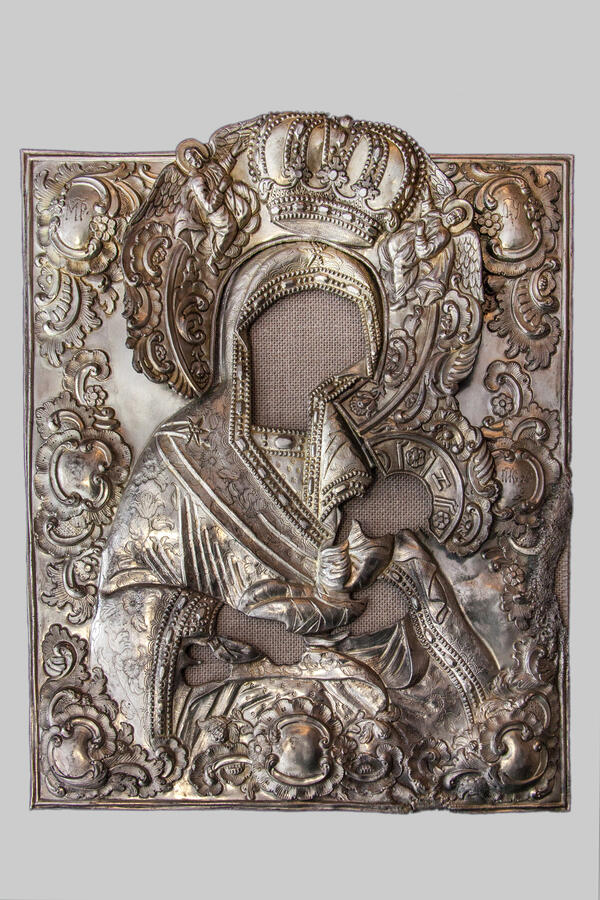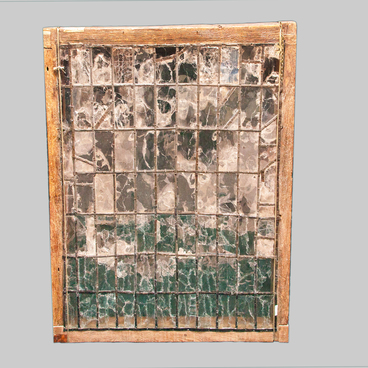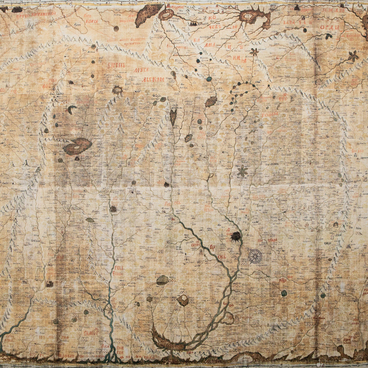This silver minted icing frame for the icon ‘Holy Mother and Child’ was made by the assay master Lev Vlasov in 1776, in Tobolsk. This is evidenced by the stamp — coat of arms of Siberia – two sables standing on their hind legs with an arrow between them, under the royal crown – and the code ‘1776/L.V.’ in a square shield.
Above the head of the Holy Mother is a false crown with rocaille scrolls, a crown and two kneeling angels with outstretched wings supporting the crown. The icon plating is decorated with floral ornaments with relief belts. The icon itself has not been preserved. The melted edge of the icing frame suggests that the main image was burned.
The tradition of decorating icons with icing frame and icon plating has been known since ancient times. Commonly, the icing frame covered the entire icon board on top of the paint layer, with the exception of a few key elements – usually the face and hands. Initially, icing frames were used to protect the painted image from external influences and damage. But over time, the tradition also acquired a spiritual and symbolic meaning to personify the heavenly immaterial light.
Icing frames were made of precious or less expensive metals: gold, silver, brass, copper. They were decorated with carvings, embossed work, filigree, enamels, colored glasses, and precious stones. There was a tradition of embroidered icing frames decorated with gold threads, beads or pearls. Such icing frames and entire icons were embroidered with gold threads in the gold-embroidery workshops of the Tobolsk Ioanno-Vvedensky Convent. Usually noble ladies embroidered them who went to the convent.
By the end of the 17th century, the icing frame had become an independent type of arts and crafts with its own characteristics. This direction has not spared the Siberian region. In the 18th century, crafts were actively developing here, silversmiths joined in workshops. Cities have developed and convents were built. During this period, the demand for writing icons and producing icing frames for them was very high. Only in the period from 1702 to 1742, 288 churches were built in Siberia, which means that at least 300 iconostases and several thousand icons were created.
Above the head of the Holy Mother is a false crown with rocaille scrolls, a crown and two kneeling angels with outstretched wings supporting the crown. The icon plating is decorated with floral ornaments with relief belts. The icon itself has not been preserved. The melted edge of the icing frame suggests that the main image was burned.
The tradition of decorating icons with icing frame and icon plating has been known since ancient times. Commonly, the icing frame covered the entire icon board on top of the paint layer, with the exception of a few key elements – usually the face and hands. Initially, icing frames were used to protect the painted image from external influences and damage. But over time, the tradition also acquired a spiritual and symbolic meaning to personify the heavenly immaterial light.
Icing frames were made of precious or less expensive metals: gold, silver, brass, copper. They were decorated with carvings, embossed work, filigree, enamels, colored glasses, and precious stones. There was a tradition of embroidered icing frames decorated with gold threads, beads or pearls. Such icing frames and entire icons were embroidered with gold threads in the gold-embroidery workshops of the Tobolsk Ioanno-Vvedensky Convent. Usually noble ladies embroidered them who went to the convent.
By the end of the 17th century, the icing frame had become an independent type of arts and crafts with its own characteristics. This direction has not spared the Siberian region. In the 18th century, crafts were actively developing here, silversmiths joined in workshops. Cities have developed and convents were built. During this period, the demand for writing icons and producing icing frames for them was very high. Only in the period from 1702 to 1742, 288 churches were built in Siberia, which means that at least 300 iconostases and several thousand icons were created.



